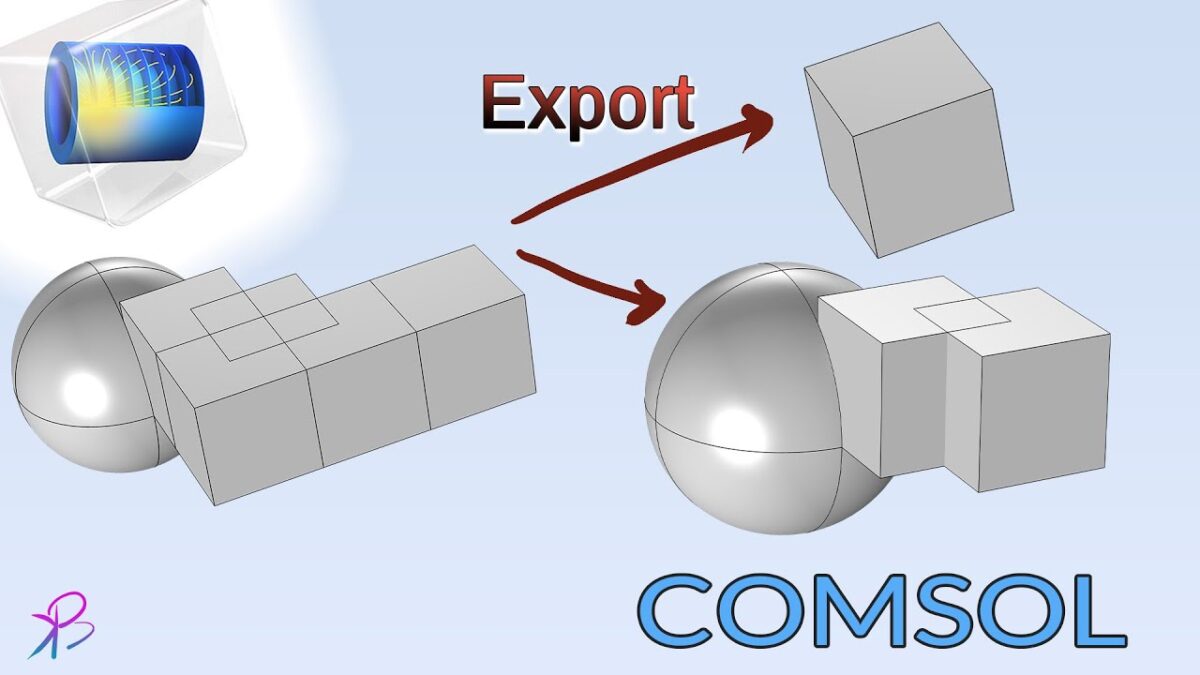In this article, we will explore three popular Finite Element Analysis (FEA) software tools: ANSYS, COMSOL, and Abaqus. We will examine their distinctive characteristics, use cases, and advantages for various engineering scenarios. 💻🔍


In this article, we will explore three popular Finite Element Analysis (FEA) software tools: ANSYS, COMSOL, and Abaqus. We will examine their distinctive characteristics, use cases, and advantages for various engineering scenarios. 💻🔍

In summary, the tutorial provides a straightforward approach to reducing the size of COMSOL project files. This technique is invaluable for researchers and engineers who frequently share simulation data or work with limited storage resources.

Selective geometry export in COMSOL Multiphysics is a valuable feature for collaborative modeling, allowing for efficient sharing and integration of specific parts of a larger model. This advanced functionality enhances the software’s versatility in handling complex projects involving multiple team members or different model components. For visual instructions and further details, the YouTube tutorial provides a comprehensive guide on this process.

Activating dark mode in COMSOL Multiphysics is a straightforward process that can enhance the user experience. This feature not only offers a visually appealing interface but also caters to the comfort of users working in different lighting conditions.

COMSOL Multiphysics is a state-of-the-art simulation software used extensively in engineering and scientific disciplines. A detailed instructional video on YouTube titled “COMSOL Multiphysics basic course: Software Basics Geometry & Materials” provides an insightful look into the foundational aspects of working with this software. This guide offers a summarized version of the video’s content, focusing on the initial steps of using COMSOL Multiphysics for simulation purposes.

COMSOL Multiphysics is a powerful simulation software widely used in engineering and scientific research. It allows for the modeling and simulation of various physical phenomena, providing an invaluable tool for students and professionals alike. A new course on COMSOL Multiphysics has been introduced, aiming to guide learners from the basics to advanced levels of simulation proficiency.

The newest release of COMSOL Multiphysics 6.2 brings groundbreaking speed and interactivity to simulation apps, focusing on data-driven surrogate models for increased computational efficiency. The update improves real-time simulation, multiphysics simulations, computational fluid dynamics models, and introduces functionality for vapor–liquid interface simulations. It also features enhancements in structural mechanics and offers general updates for improved user experience, making it essential for professionals in scientific and engineering fields.

COMSOL Multiphysics® is a comprehensive, general-purpose simulation software platform widely used across various fields of engineering, manufacturing, and scientific research. It offers an integrated environment for physics-based modeling and simulation, aimed at addressing complex multiphysics phenomena. This blog post delves into the features, capabilities, and applications of COMSOL Multiphysics®, highlighting its impact on engineering and […]

Introduction to the Interconnected World of MATLAB and COMSOL In the modern era where technology seamlessly blends into every aspect of scientific inquiry and engineering design, two giants stand tall: MATLAB and COMSOL Multiphysics. This duo acts as the backbone for a multitude of complex simulations and computations, propelling the capabilities of researchers and engineers […]

Introduction Comsol Multiphysics is a groundbreaking software that has redefined the capabilities of numerical simulation. With its multifaceted features and adaptable nature, it stands as a pillar of advancement in the realm of engineering and physics. In this in-depth article, we will explore its myriad functionalities, its transformative impact, and how it is charting the […]
